Iceland: Hot Dogs, Waterfalls, Volcanoes, Black Sands, & Black Crust Pizza
After visiting the Blue Lagoon, Grindavik (volcano), and the Golden Circle, we finally started our Ring Road adventure on Tuesday, September 13, 2022. We woke up in our camper van in the Skjól campsite after a very peaceful night of sleep. This morning we took the time to make coffee and eat skyr (yogurt).
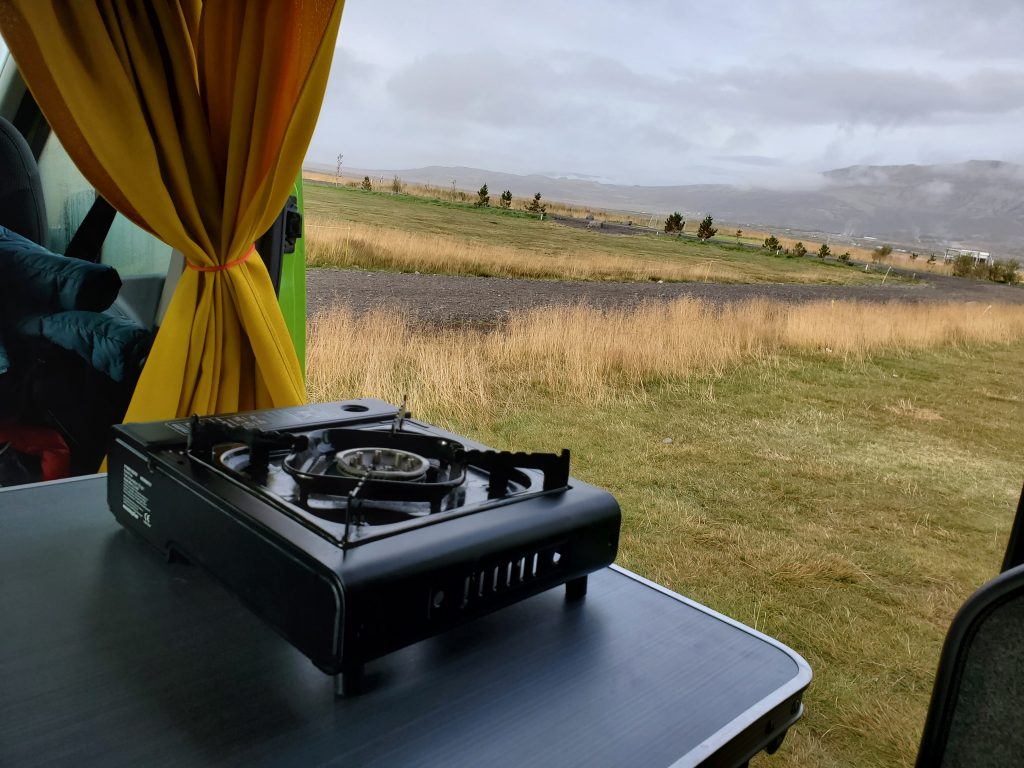
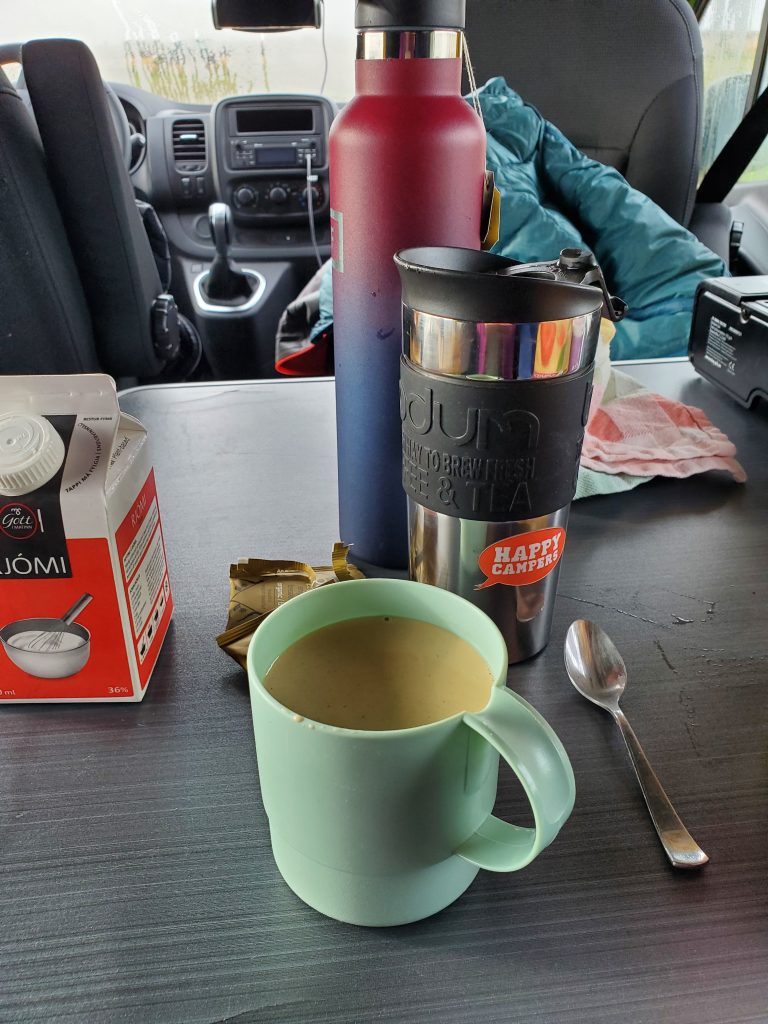
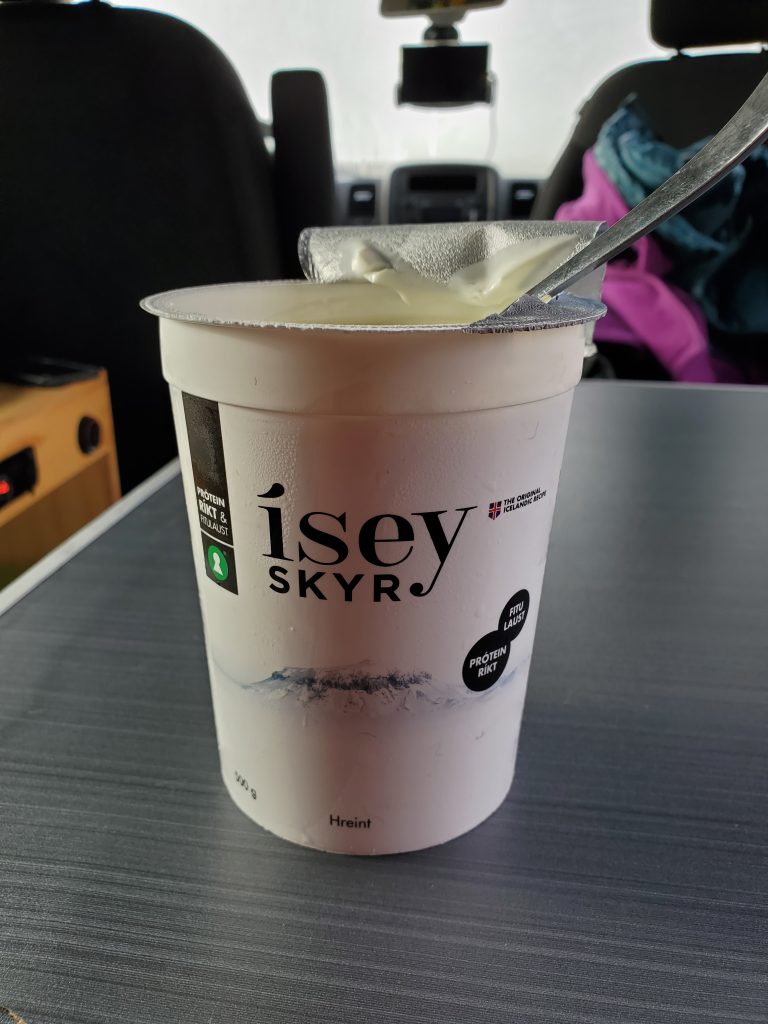
After breakfast, we looked at the day’s itinerary on the handy tablet provided by Happy Campers. We picked Seljalandsfoss waterfall as our next stop, but we watched the road for other interesting stops along the way. Renting a camper van allowed us the flexibility to decide where to go on a whim rather than being tied to check-ins at certain destinations.
Lava Centre
It didn’t take long for us to find a place where we wanted to stop. Along the road, we saw the Lava Centre and decided we’d take a look. The lobby contained displays of major volcanoes in Iceland. These displays showed current seismic activity associated with each volcano.
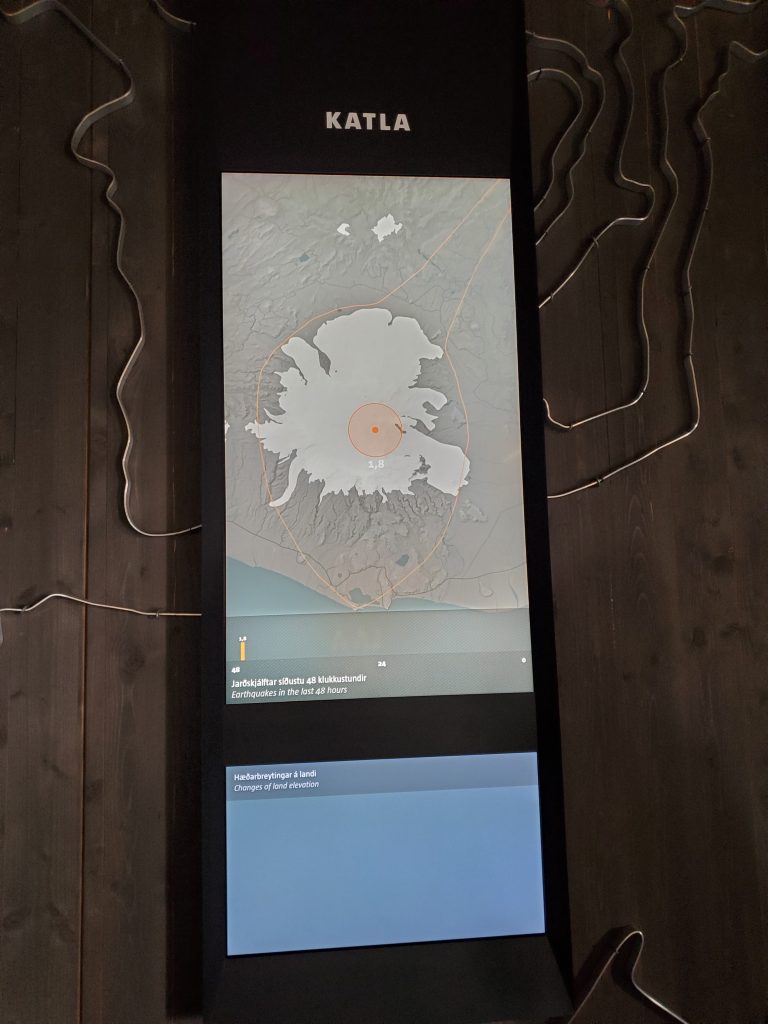
The Lava Centre shows a film about the volcanos of Iceland. Afterward you can walk through interactive exhibits where you learn about lava flows, earthquakes, and how the earth is constantly changing. You can stand on certain areas of the floor and feel simulations of earthquakes. You could also point at images and learn more about historic volanic eruptions. In one room you can see a simulation of the giant lava tube underneath Iceland.
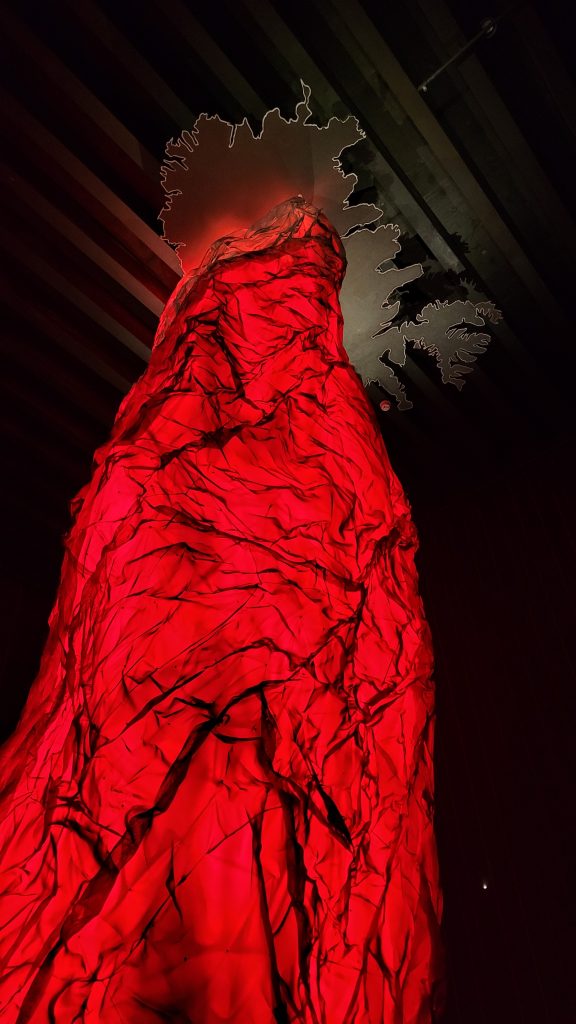
Icelandic Hot Dogs
After visiting the Lava Centre, we stopped at an N1 gas station to get hot dogs. The glorious Icelandic hot dog deserves a sub-heading of its own. In fact I could write an entire post about my love for Icelandic hot dogs, but I will just cover them as we eat them. Let me tell ya…these hot dogs are FANCY! They are made with organic, grass-fed lamb along with some pork and beef. Icelanders eat them with ketchup, brown mustard, a remoulade-type of sauce, fresh chopped onions, and fried onions. They are bursting with flavor, and unlike many foods in Iceland, they are inexpensive. I had read about these hot dogs before our trip, so I was prepared for something awesome, and I was not disappointed.
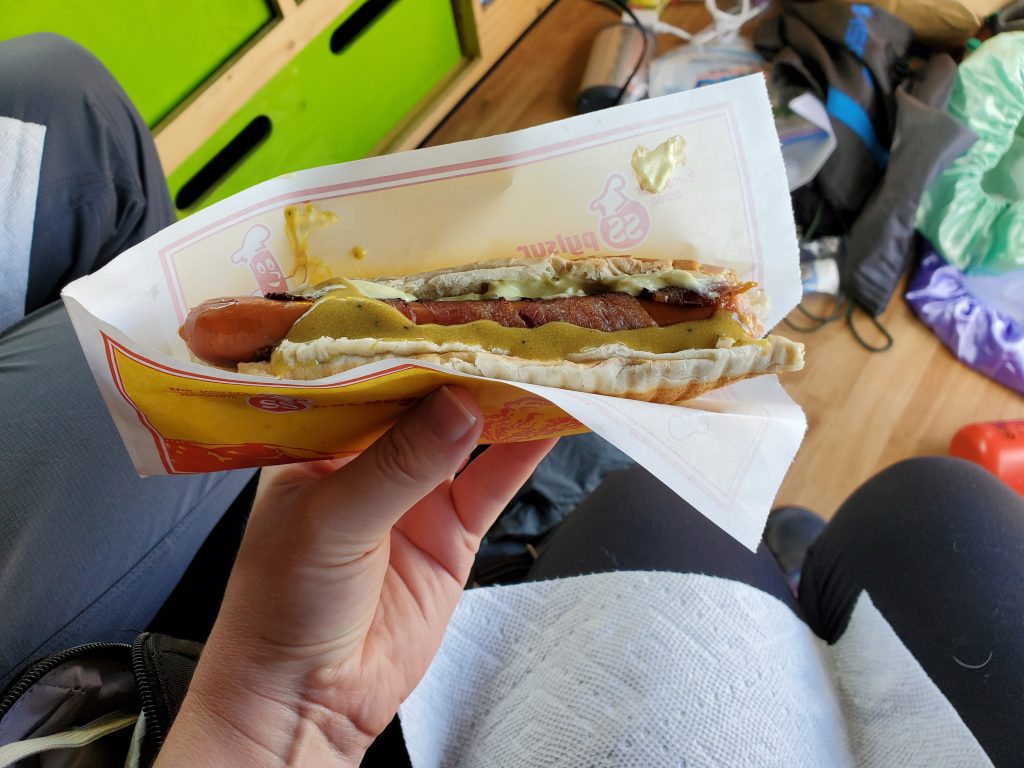
Seljalandsfoss
Shortly after lunch we reached Seljalandsfoss. You might be familiar with this waterfall as it is one you can walk behind. Once again, we grabbed our rain pants and waterproof rain jackets and headed toward the waterfall. With blue skies and dry weather, people flocked to this tourist site. We walked in a line up to the waterfall, and then we walked in behind it. You could feel the pounding water and mist as you got closer. Behind the waterfall the rocks were a bit slippery but manageable, and everybody had enough room to move.
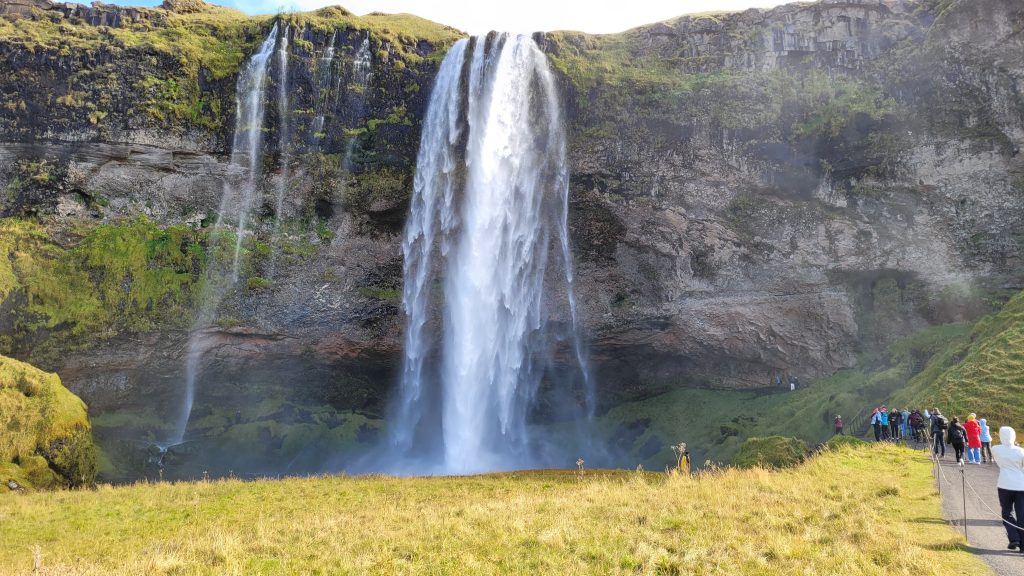
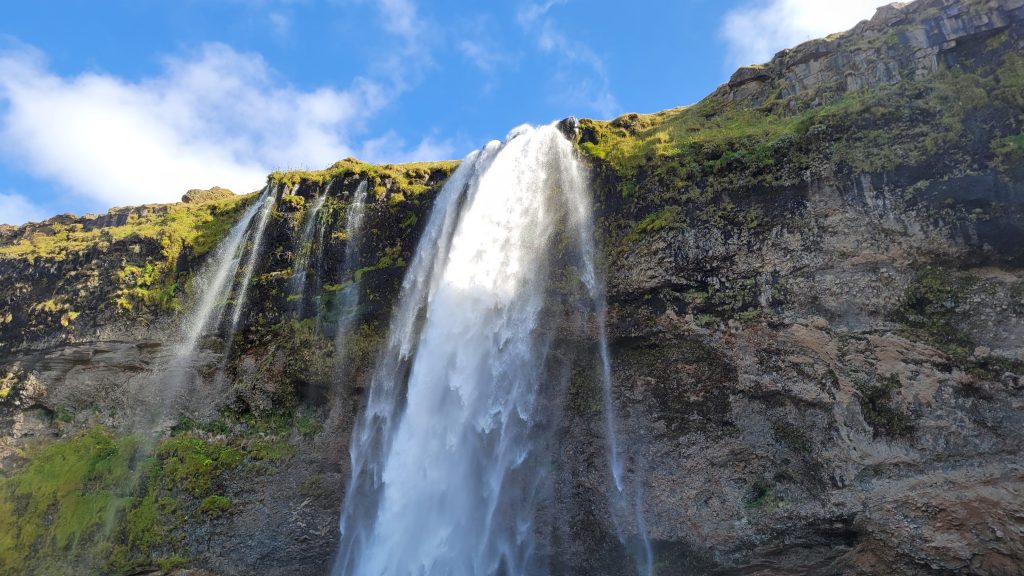
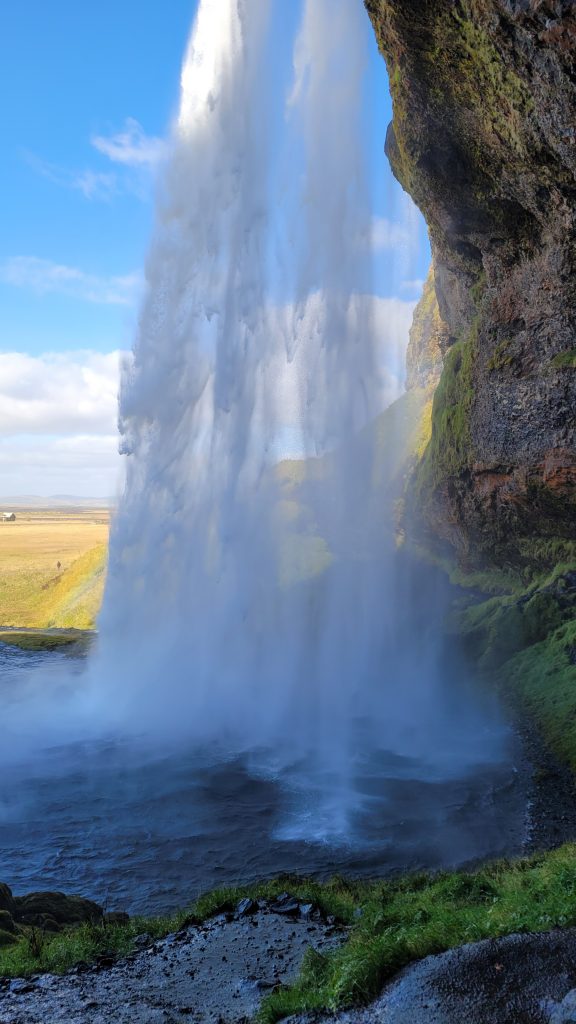
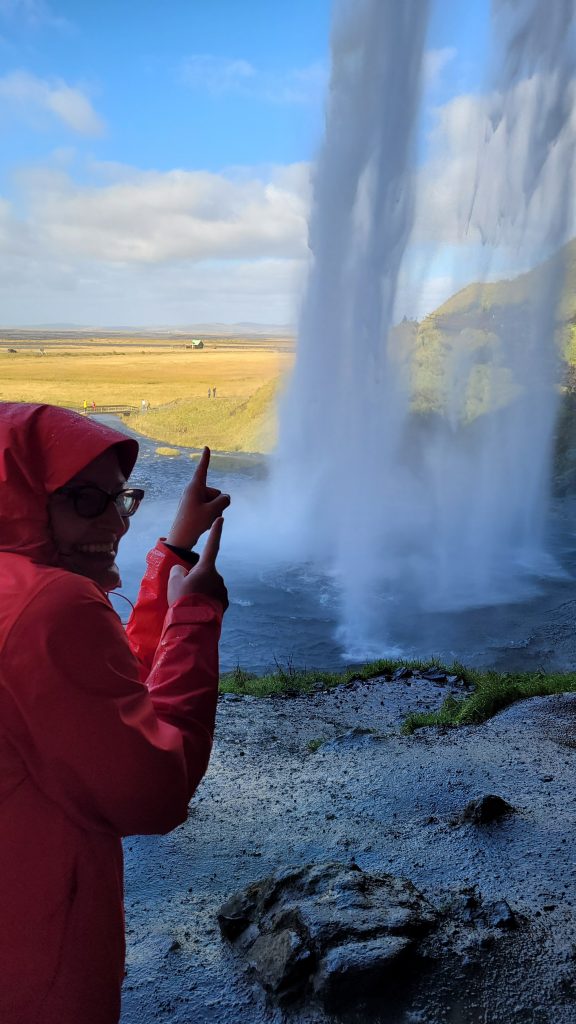
We took a quick video so that we could capture the power of the waterfall.
Gljúfrabúi
Walking along a path from Seljalandsfoss, we could see a couple of other waterfalls followed by a cave waterfall called Gljúfrabúi. We could tell it was another amazing attraction as another line of tourists snaked back through the cave to reach the waterfall. At first I held back and let Graham go in and investigate. I wasn’t too keen on the thought of slipping on the rocks or dealing with the crowd, but as I watched more and more people enter and exit the cave, my FOMO got the best of me. I worked my way through the cave, balancing on rocks with other people balancing on rocks in a steady but shallow stream. Finally I decided to give my waterproof hiking boots a test and just stuck my feet in the water and walked. I walked past all the people delicately making their way into and out of the cave. Basically I gave myself a FastPass. I got to the main viewing area as Graham was turning to leave. We stopped and got a selfie while admiring the beauty of this secluded waterfall.
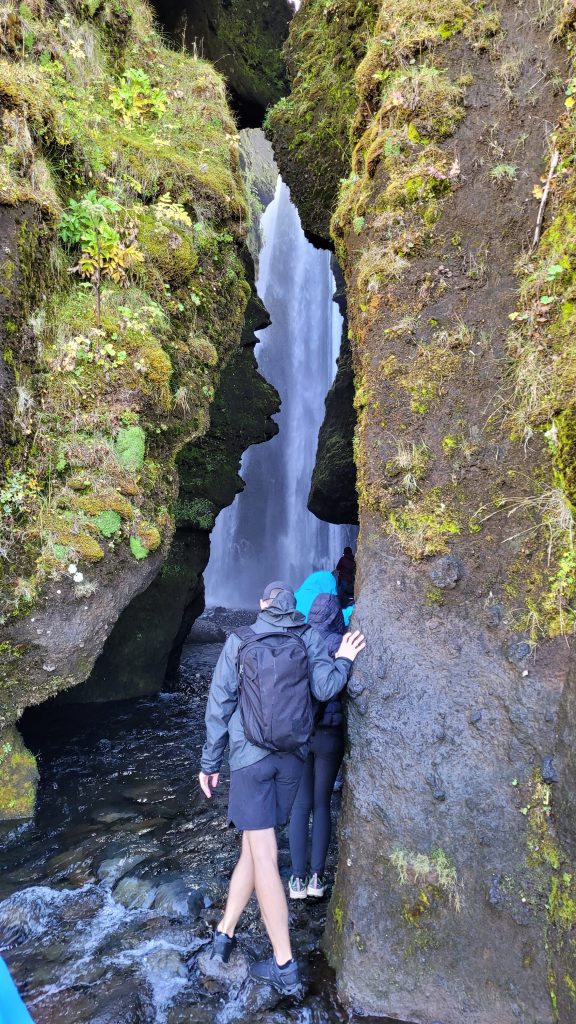
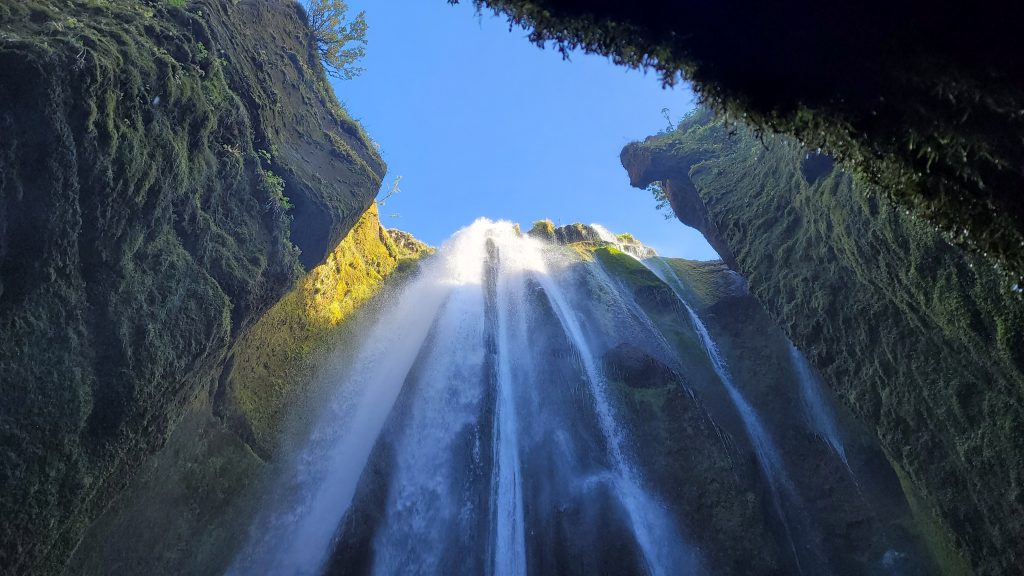
We captured a short video inside the cave.
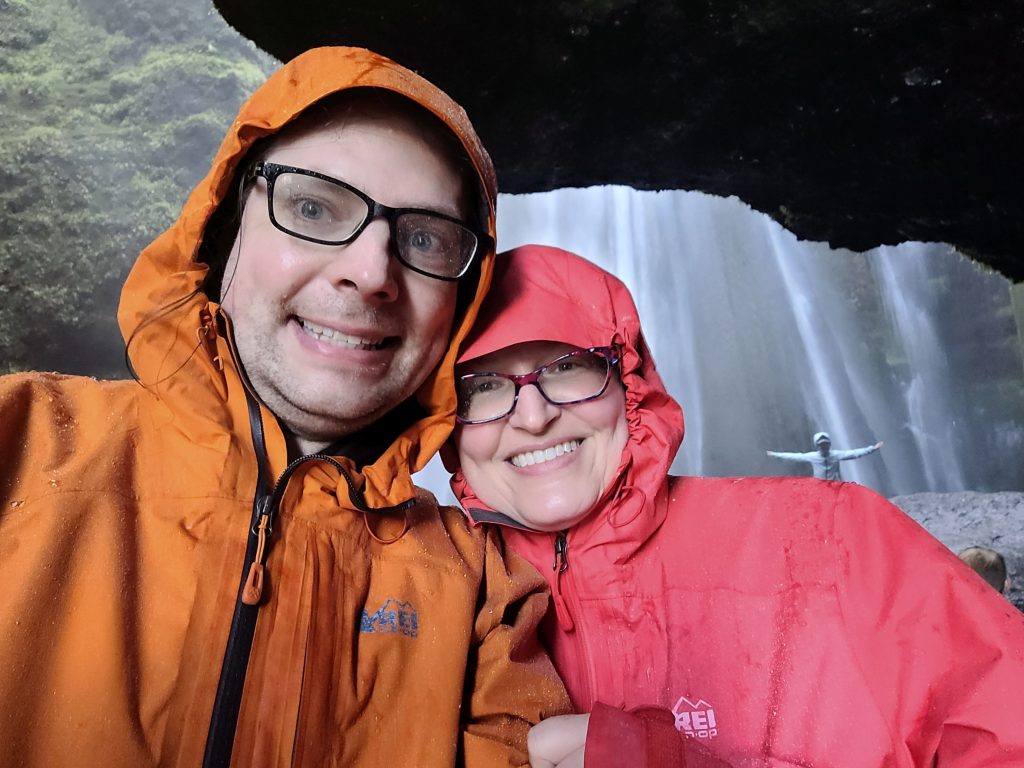
Rútshellir
On our way to the next waterfall on our journey, we stumbled across a roadside attraction that needed my immediate attention. I watched a travel video covering this odd place and wanted to see it, but I didn’t make an outright plan to visit it. Rútshellir cave is a man-made cave complex of unknown origin. Stories say it was inhabited by a troll, a thief, a farmer, sheep, and/or hay, and it might have been a pagan temple. A private farm owns the cave and allows visitors to access it via a little wooden ladder going over the fence. The official signage says that the caves were likely used for hay and a blacksmith’s forge.
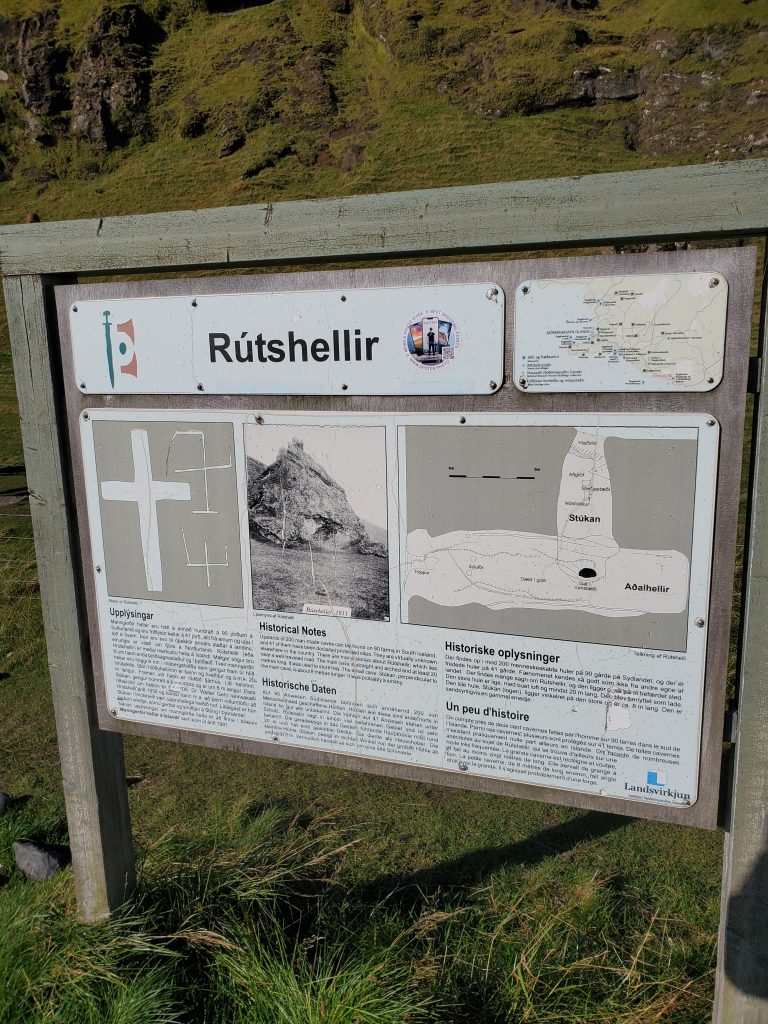
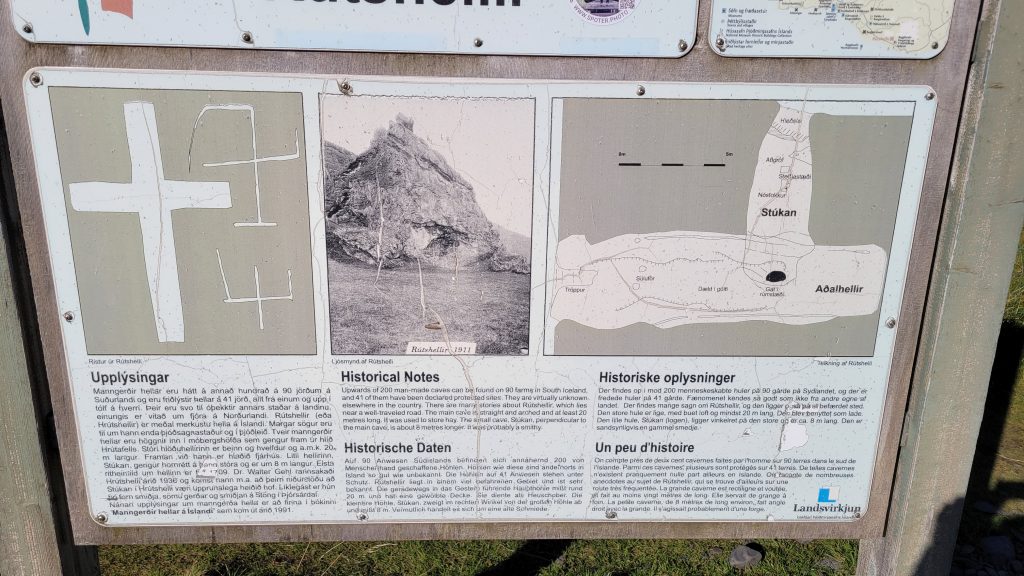
Sometimes you just need to immerse youself in the mysteries of the world. We might not ever know the true purpose of the Rútshellir cave, but visitors decided it needed to be some kind of shrine to gnomes, elves, or something.
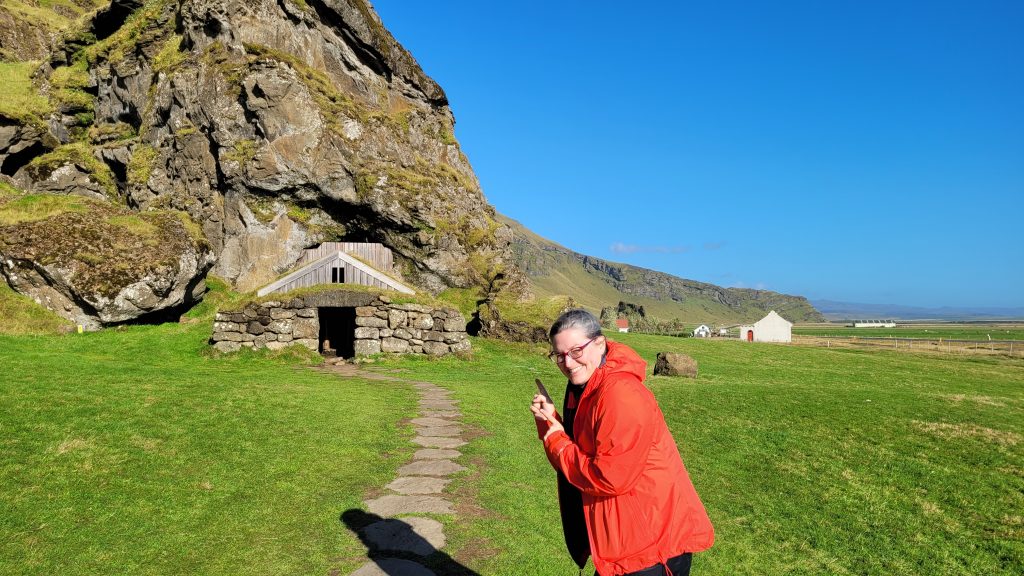
What is this wild sight? As a lover gnomes and such, I was thrilled to see this arrangement. Icelandic people believe in elves and trolls, and this display could be in honor of that.
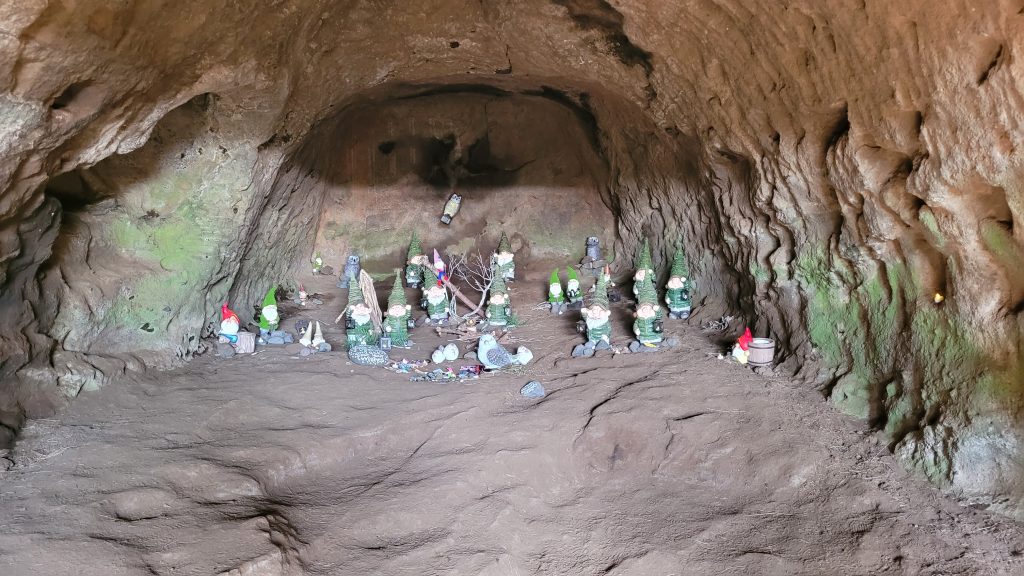

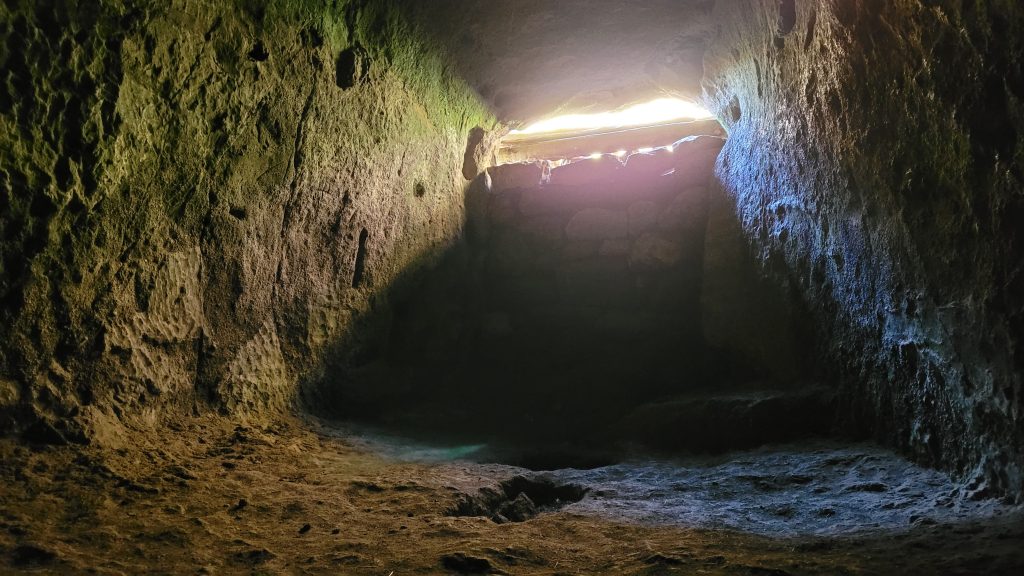
The farm owners have a collection box for donations. We initially left some Icelandic Krona but realized it was not very much money. We added some U.S. dollars as well. I am sure the farm owners use the funds for upkeep of the cave and surrounding area, but I wanted to believe it’s a donation for luck.
Skogafoss
After our Rútshellir cave excursion, we continued our journey to Skogafoss, a huge and powerful waterfall. As we approached Skogafoss, we could see a rainbow in the spray. The flat black sand and rocks at the base of the waterfall allow you to walk right up to it.
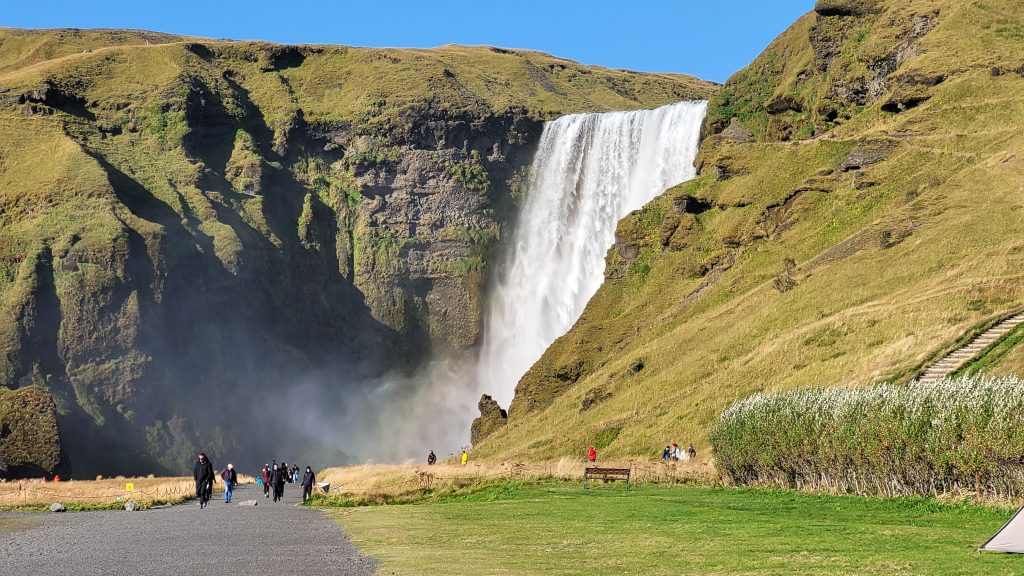
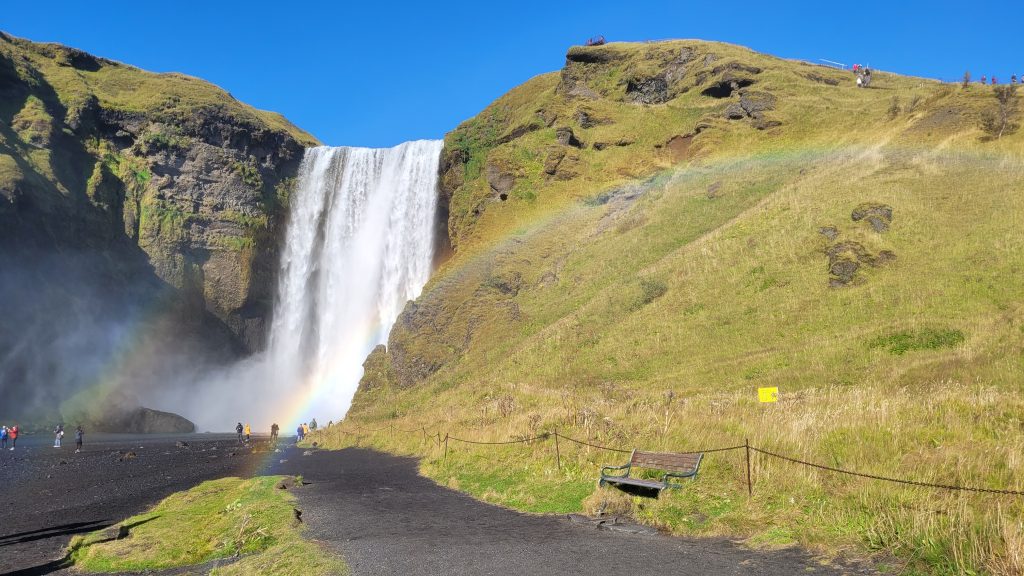
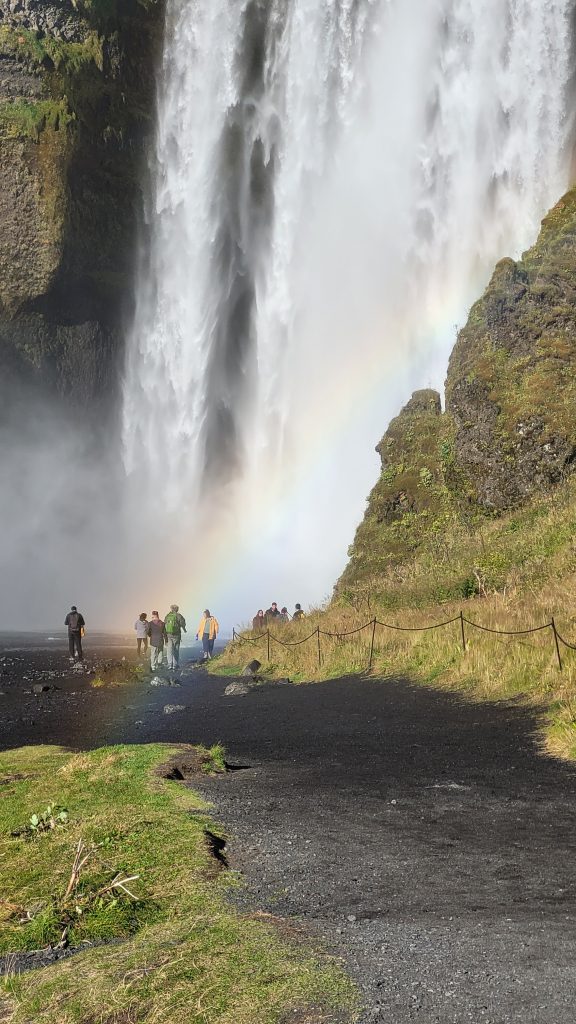
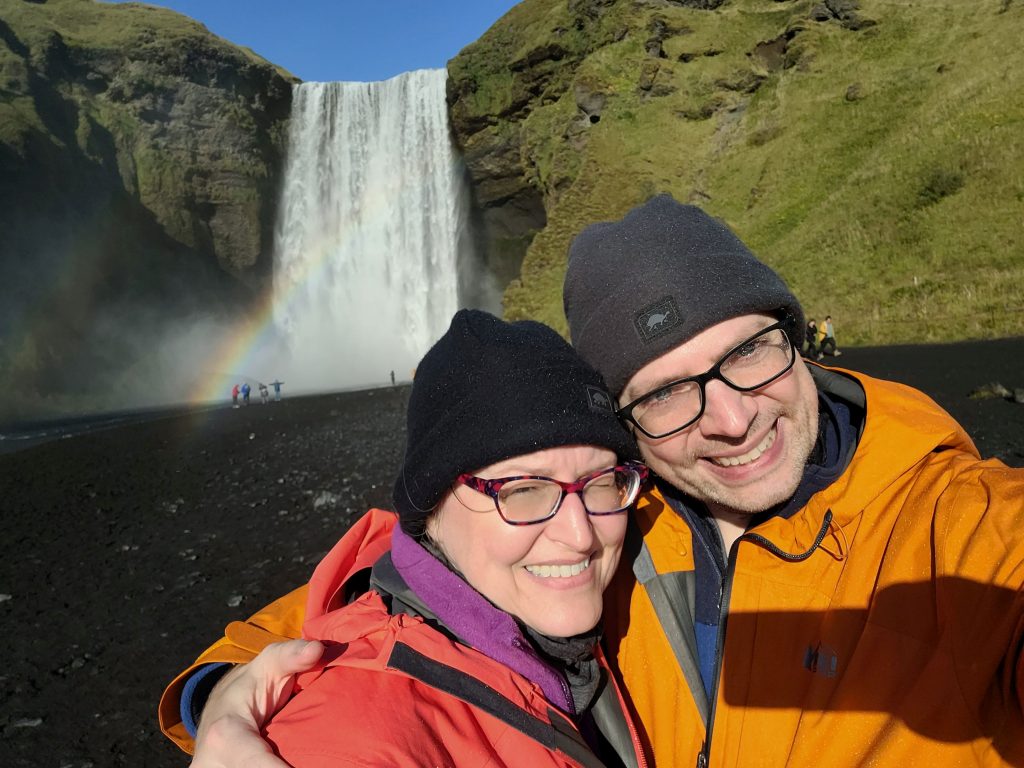
On the right side of Skogafoss, steep metal stairs take you to the top of the waterfall to gain a different view. The stairs seemed to go on forever, and I found I had to stop and catch my breath. Fortunately, other people joined me in these pauses. We gave each other permission to take a break. Meanwhile twenty-somethings ran up the stairs next to me. At this moment I realized I had not focused on the right kind of exercise leading up to this trip. Later I read up on why I was puffy and discovered that it has to do with a lack of fast-twitch muscle tone. If I want to breeze through seemingly endless steep stairs in the future, I need to focus on stair running, jumping, sprints, and heavy lifting.
Though I was puffy along the way, the view from the top platform made it all worthwhile.
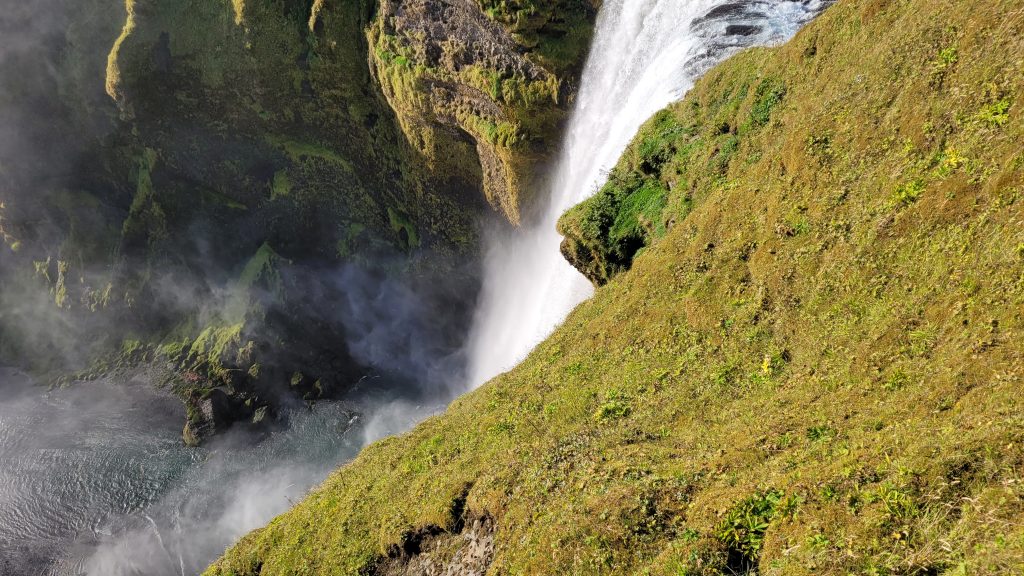
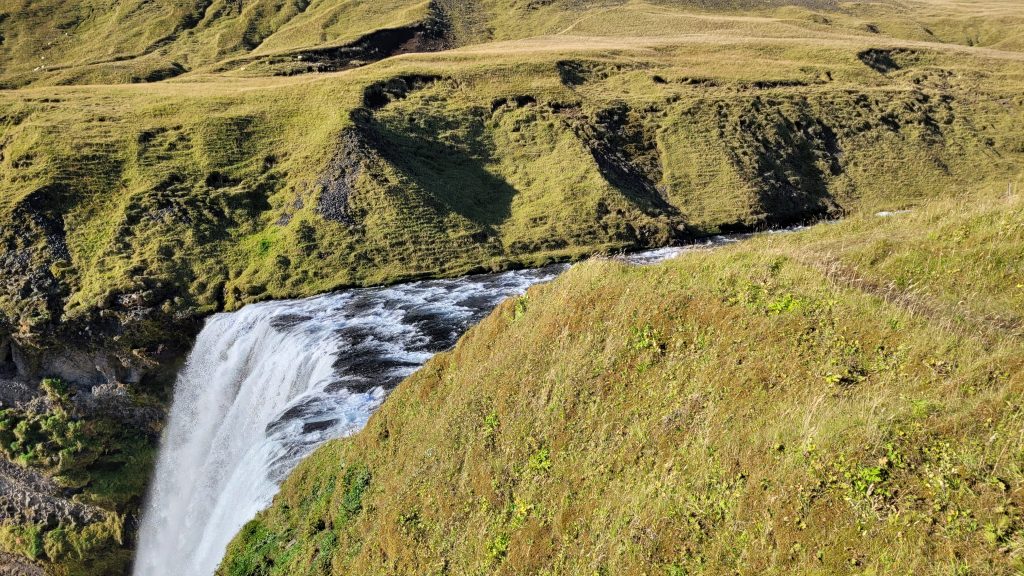
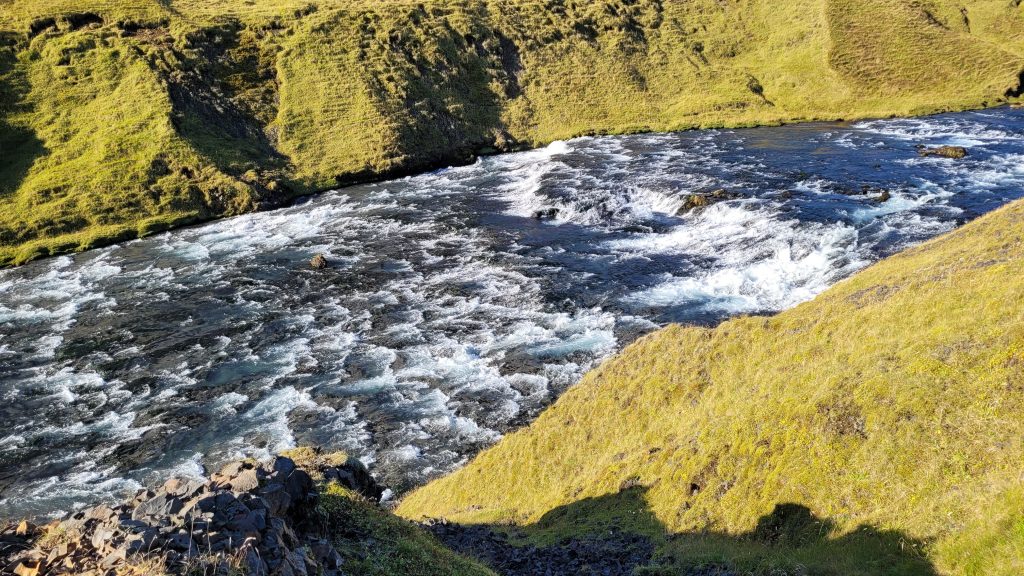
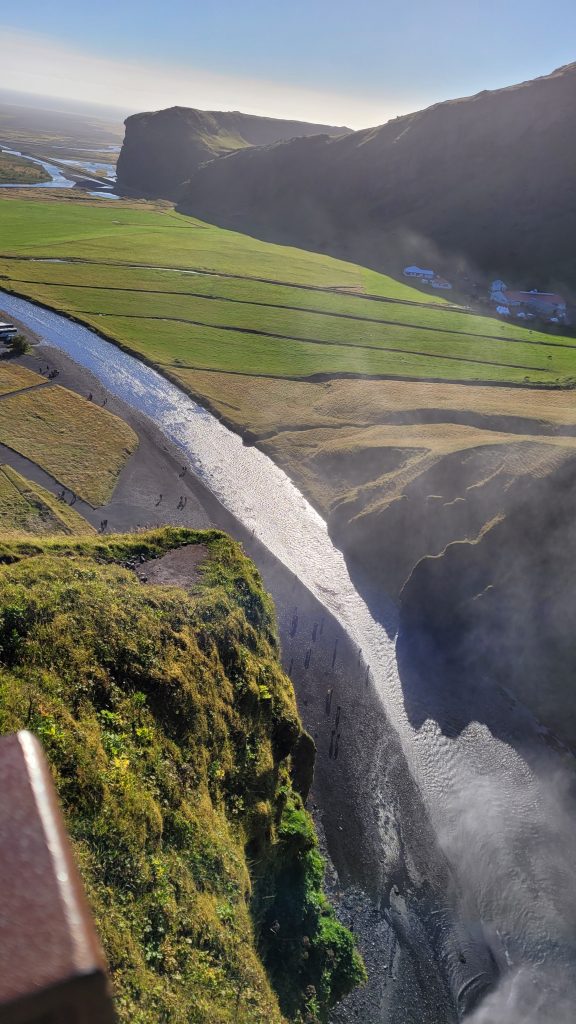
Dyrhólaey Peninsula
On our way to Vík we drove a steep road up to the top of the Dyrhólaey Peninsula. Our Happy Campers itinery on tablet included this stopping point, but we had no clue what we’d find at the top of this road. We just let it unfold as we drove up. It turned out to be one of the most gorgeous places we’ve ever seen. This lookout point offers jaw-dropping views of the ocean, black sand beaches, and mountains (volcanoes!). You can see both Eyjafjallajokull (the volcano that shut down flights in 2010) and Katla (a volcano featured in the series Katla) with their glacier caps in the background. It helped that we enjoyed unusually sunny skies.
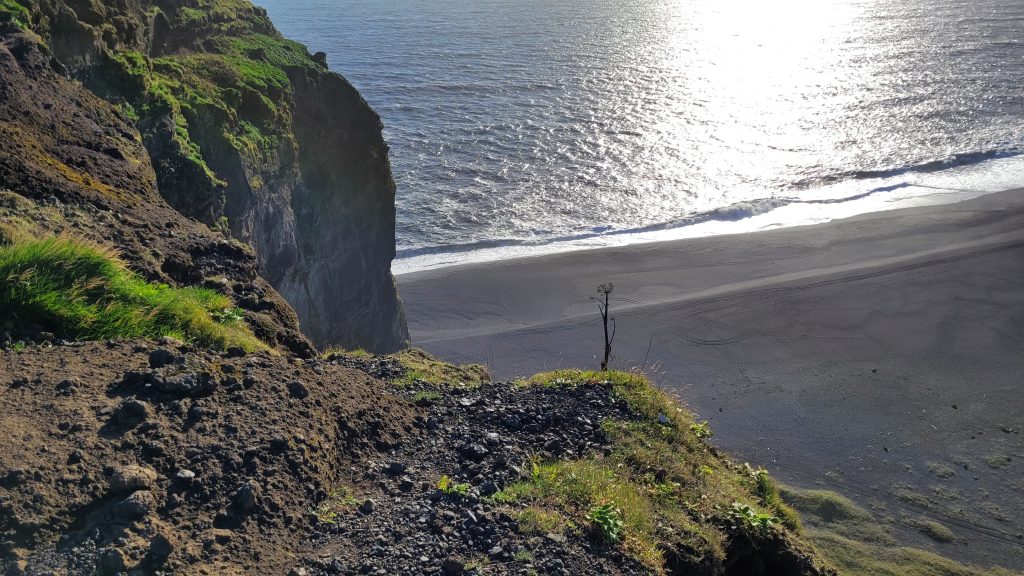
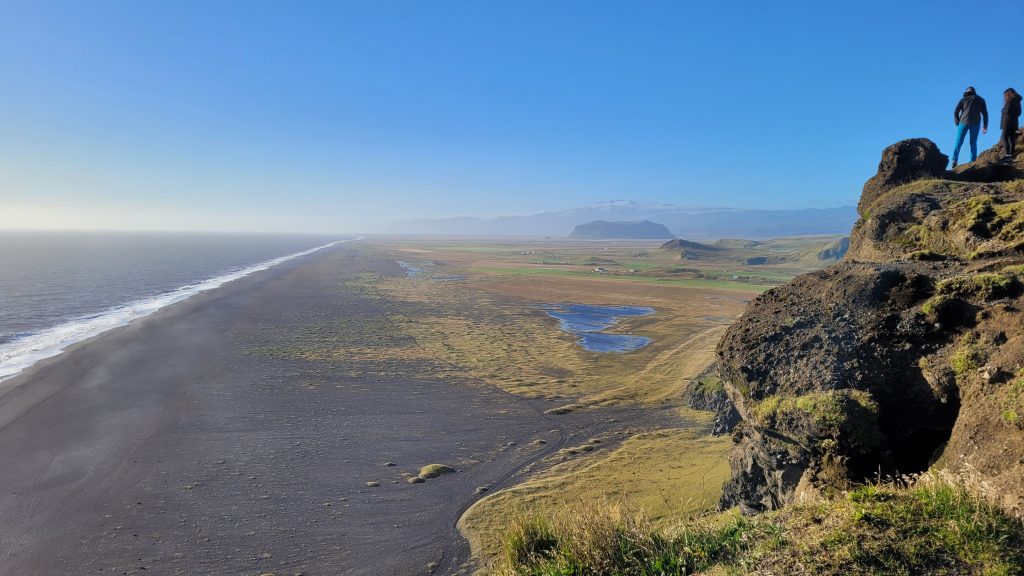
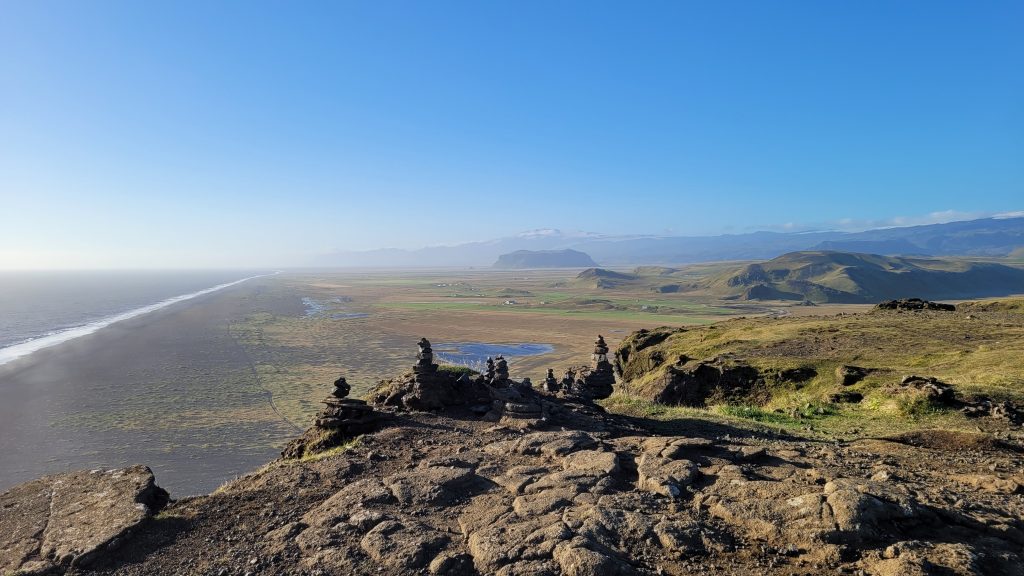
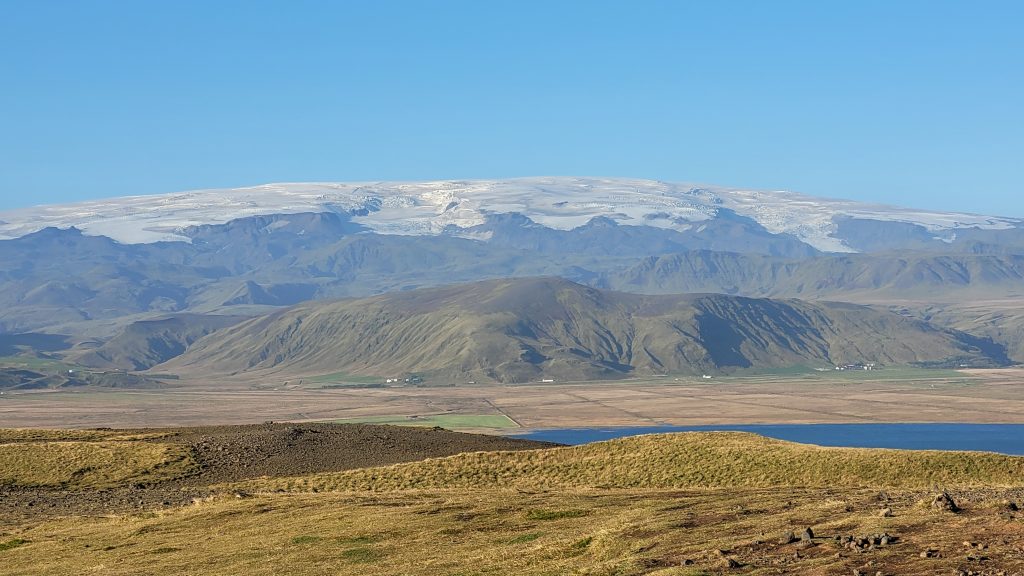
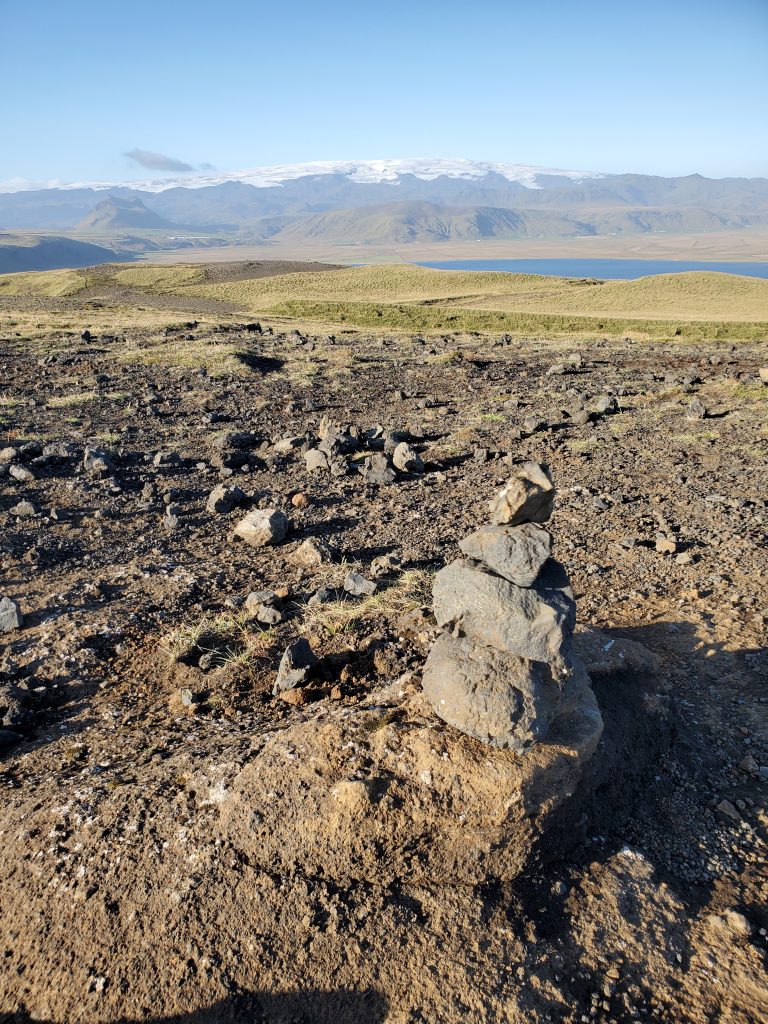
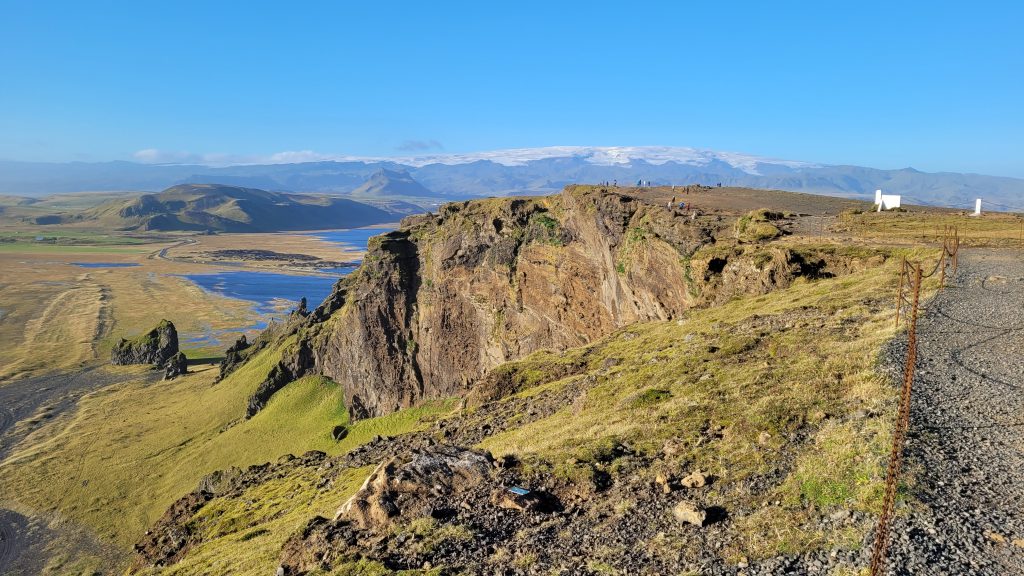

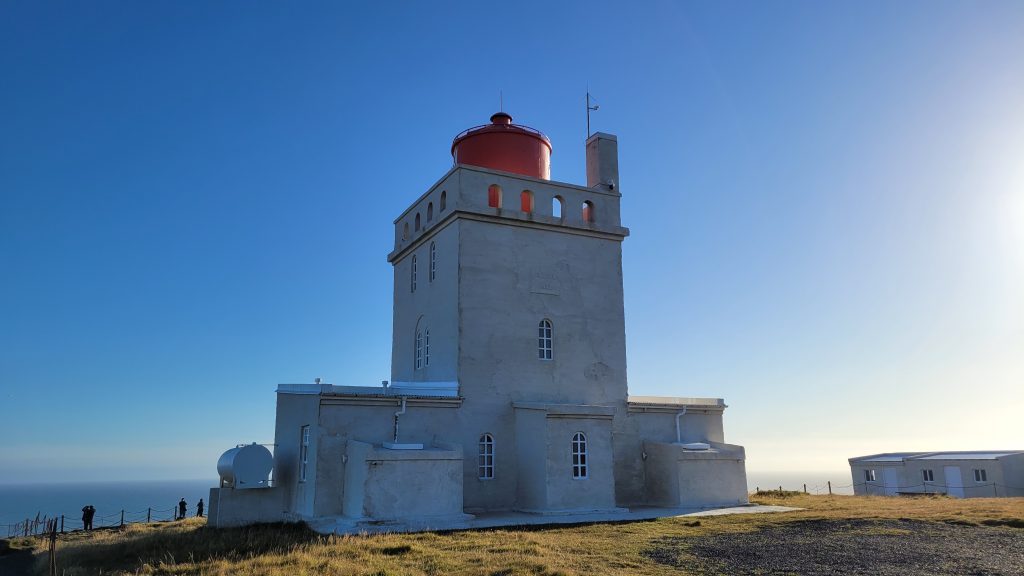
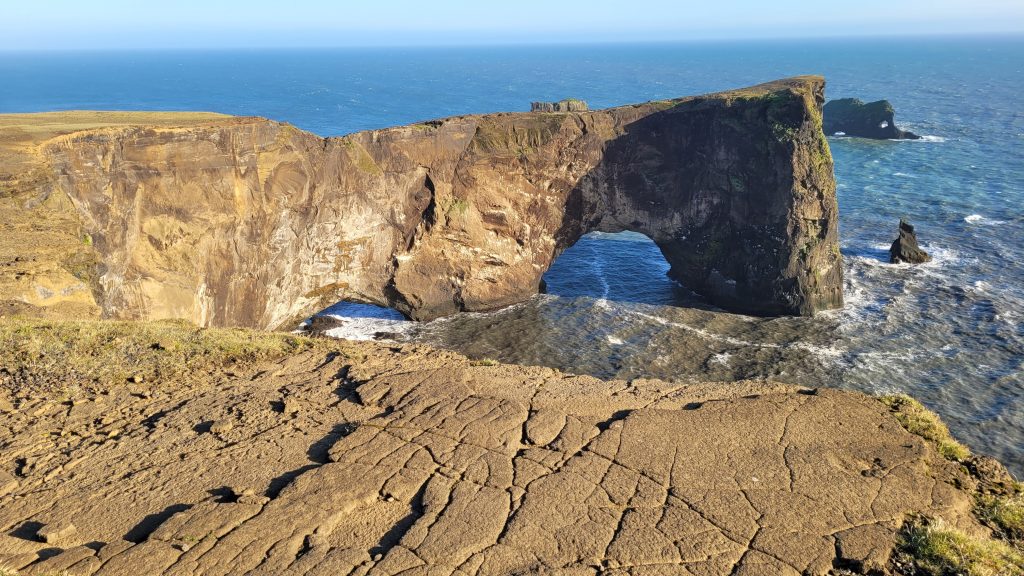
Reynisfjara Beach
After a terrifying drive down the peninsula (I was pretty sure we’d fall off the side), we headed to Reynisfjara Beach, which is famous for its black sands, caves, basalt columns, and trolls. Yeah, I said trolls, but first, I need to address the sheep. In Iceland sheep roam freely through the summer months and into fall (which is basically September, when we were there). During September the local farmers, townsfolk, and tourists round up the sheep in a custom called the réttir, identify the owners, and relocate them to the farms where they belong for the winter. When we pulled into the Reynisfjara Beach parking lot, we saw sheep on an impossibly steep hill.
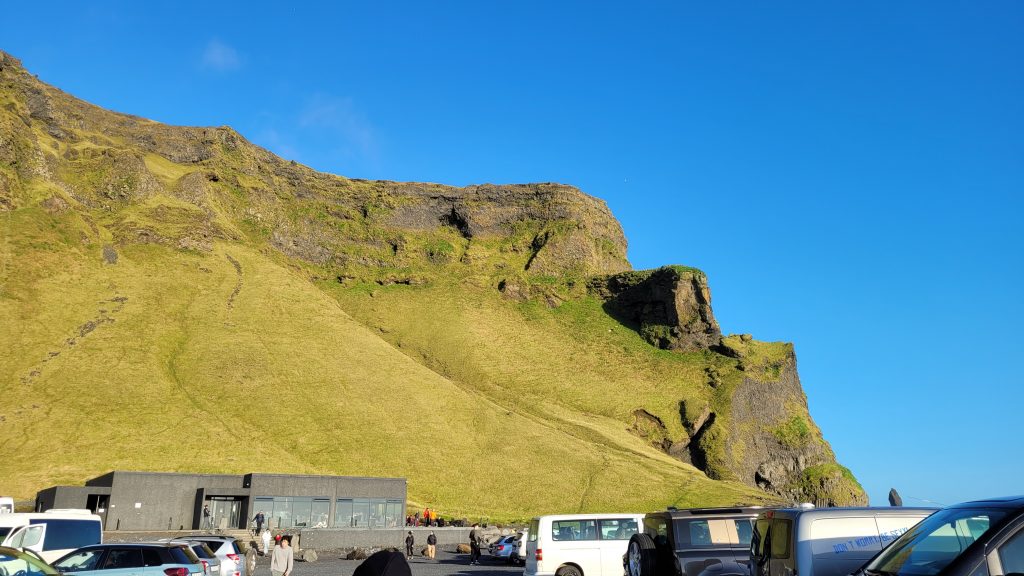
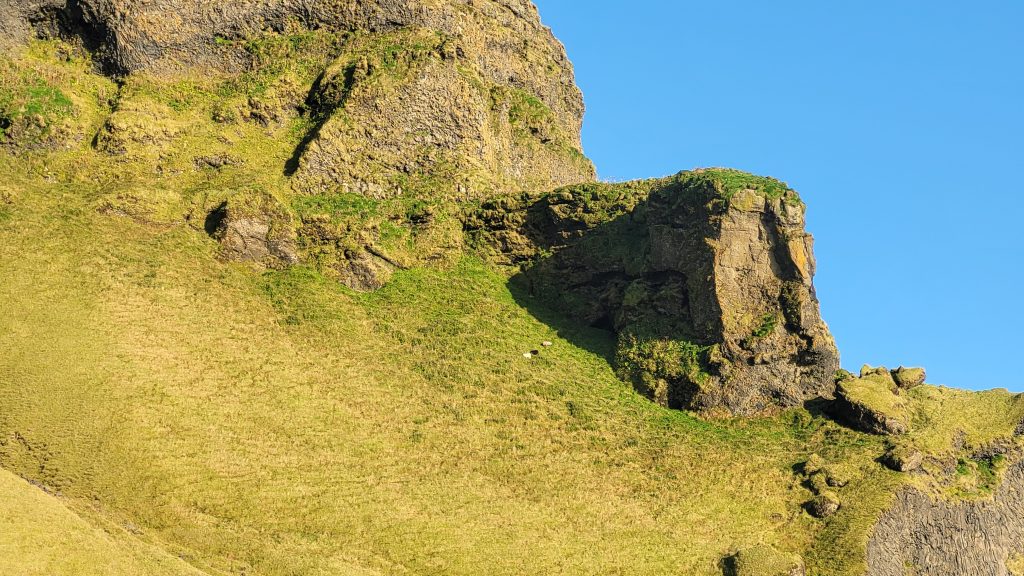
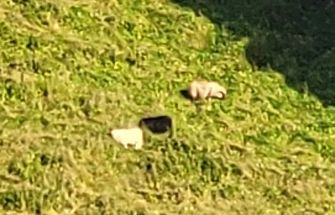
It’s not every day that you go to a beach with signs about not turning your back to the ocean. The swift waters will snatch you up and drag you out to sea if you’re careless, especially if you enter caves. The black sand beach is a mixture of sand and smooth rocks. It makes a delightful crunching sound as you walk across it.
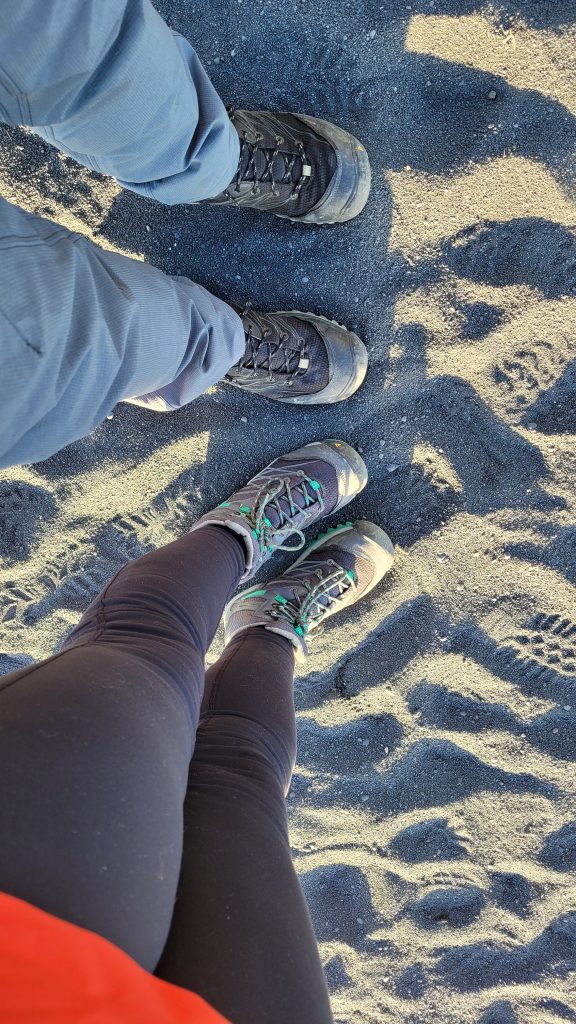
The basalt rock columns look man-made, but they actually developed as lava cooled in the ocean. The geometric shapes look intentional as though chiseled.
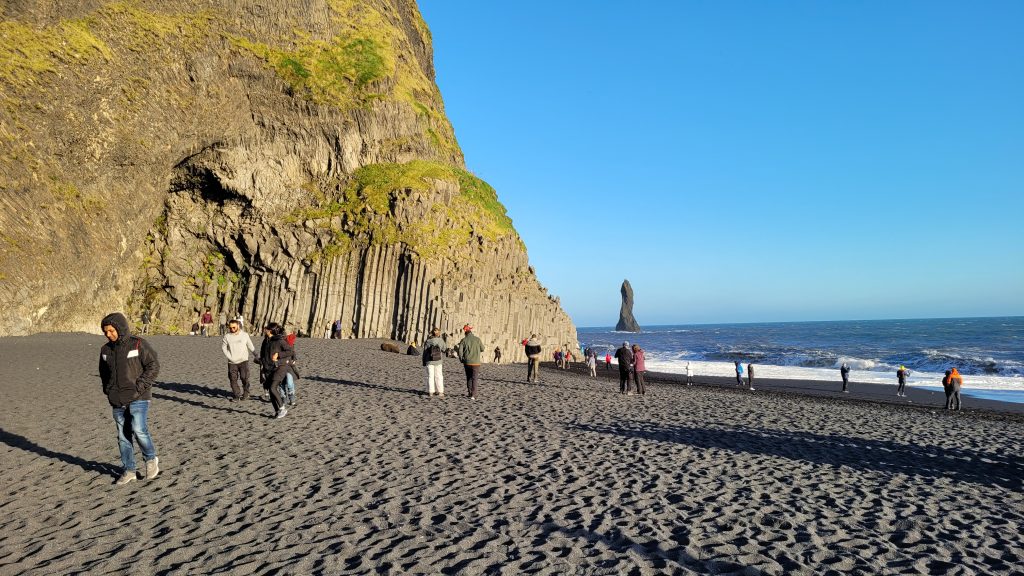
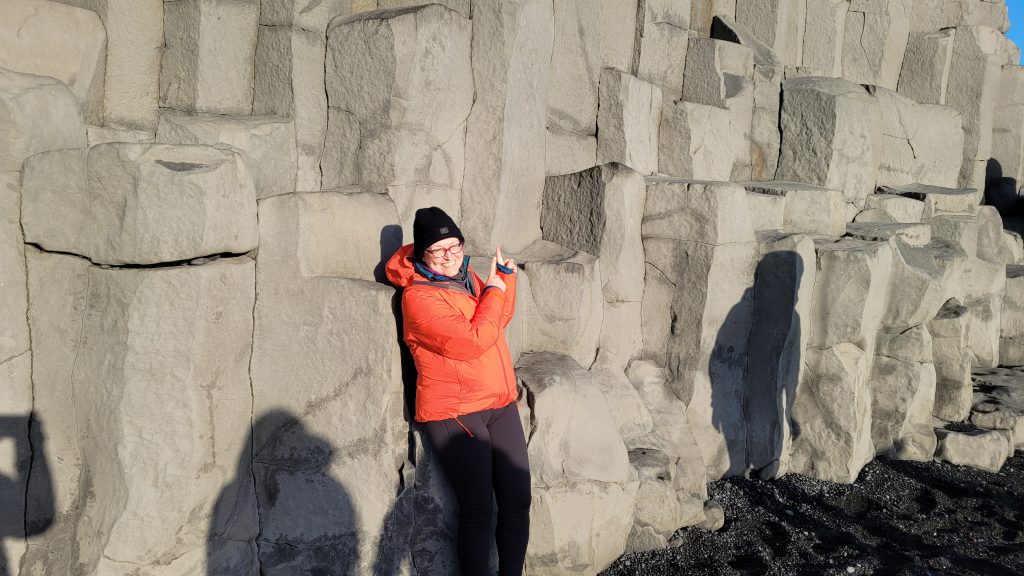
Reynisdrangar
At the edge of this mountain, you can see the Reynisdrangar basalt stacks (or sea stacks) going out into the ocean. According to Icelandic folklore, these basalt stacks are actually trolls frozen in stone forever.

Hálsanefshellir Cave
The basalt rock formations surrounded us as we entered the Hálsanefshellir Cave, a sea cave. Geometric patterns lined the ceiling and walls.
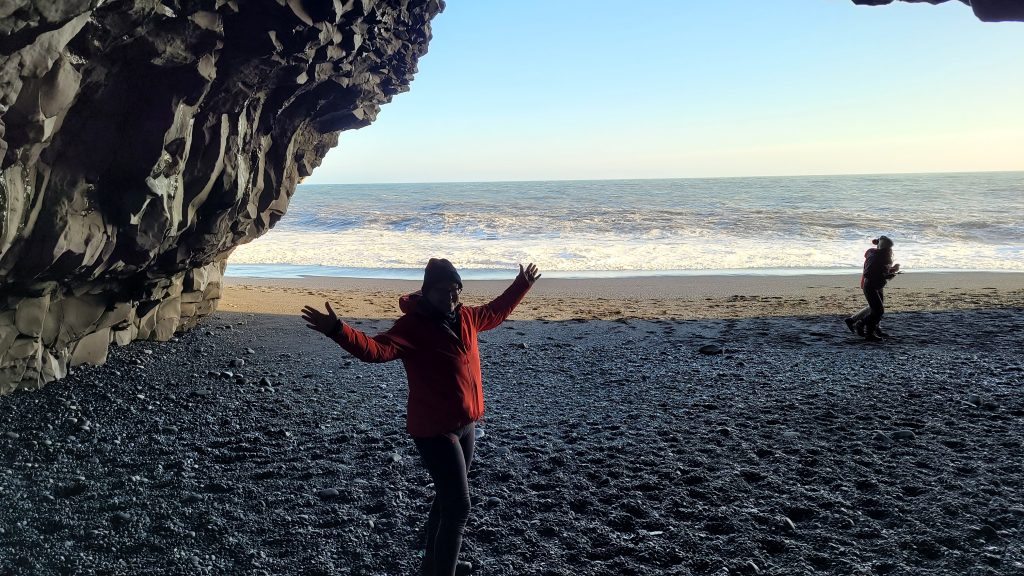
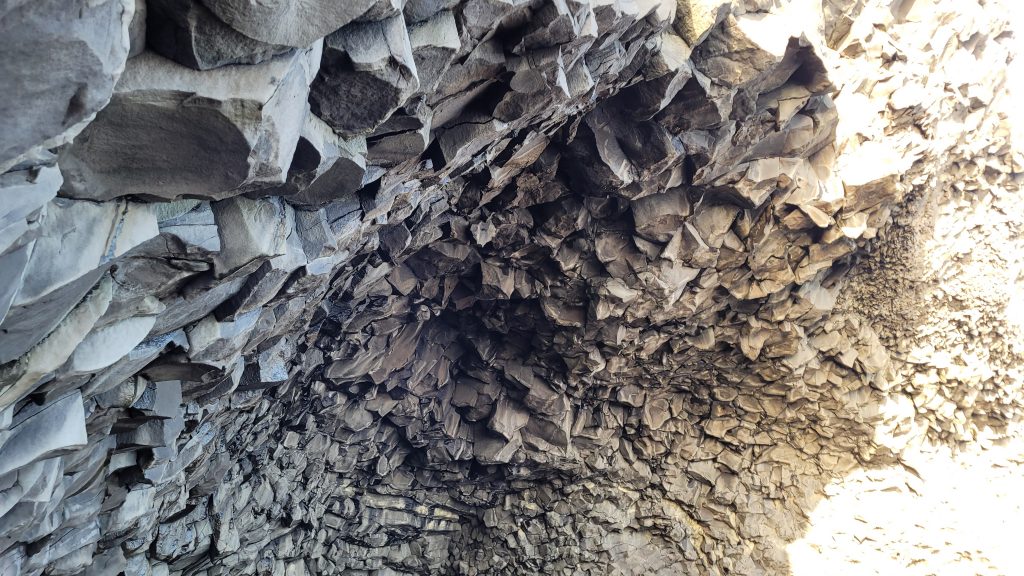
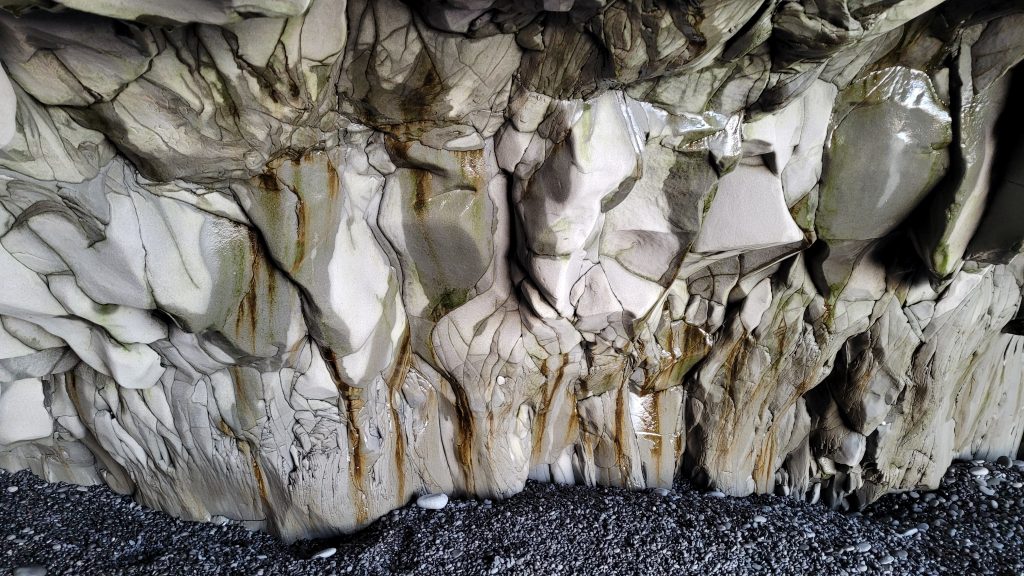
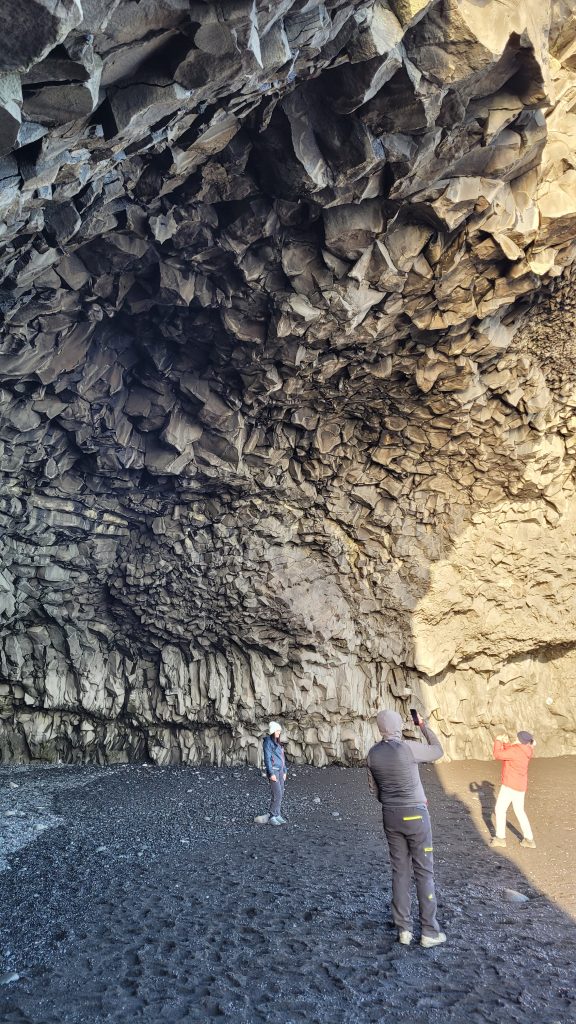
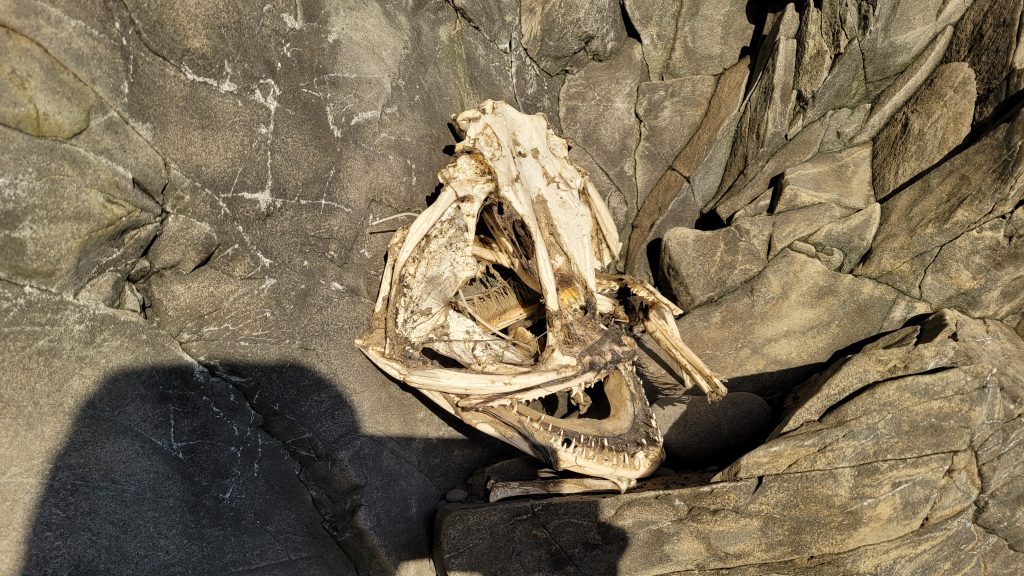
Unfortunately, we lingered a little too long in the cave as the incoming tide washed in blocking our exit. As the waters receded, we managed to splash around the corner to return to our camper van. Those Keen waterproof hiking boots proved their worth once again. Our boots were covered in black sand, but our feet were dry!
Vík
After our beach adventure, we drove to our final destination for the night, Vík. The small seaside village sits at the foot of Katla. We drove straight to the campground, expecting the same laid-back and friendly service we experienced at the Grindavík and Skjól campgrounds. As we did at the other two campgrounds, we drove to a spot we liked and then planned to go to the check-in office. Before we could even begin to park, this woman ran up to the passenger-side window yelling at us. Apparently, we made a faux pas as we didn’t go to reception first. The woman demanded that we drive to the reception office, so we did as we were told, but I was totally pissed that this woman treated us like we were criminals or something. The campground was not even busy! After paying for the night, a different person at the reception office kindly instructed us to pick a spot without electrical hookups.
The experience with “The Witch of Vík” as we called her really left a bad taste in my mouth for the campground, but it was ideally-located (town center), and we were only staying there one night. After looking at Google reviews for the camprgound, I discovered that we were not the only people taken aback by this woman’s behavior. Do better Vík campground! Kindness matters!
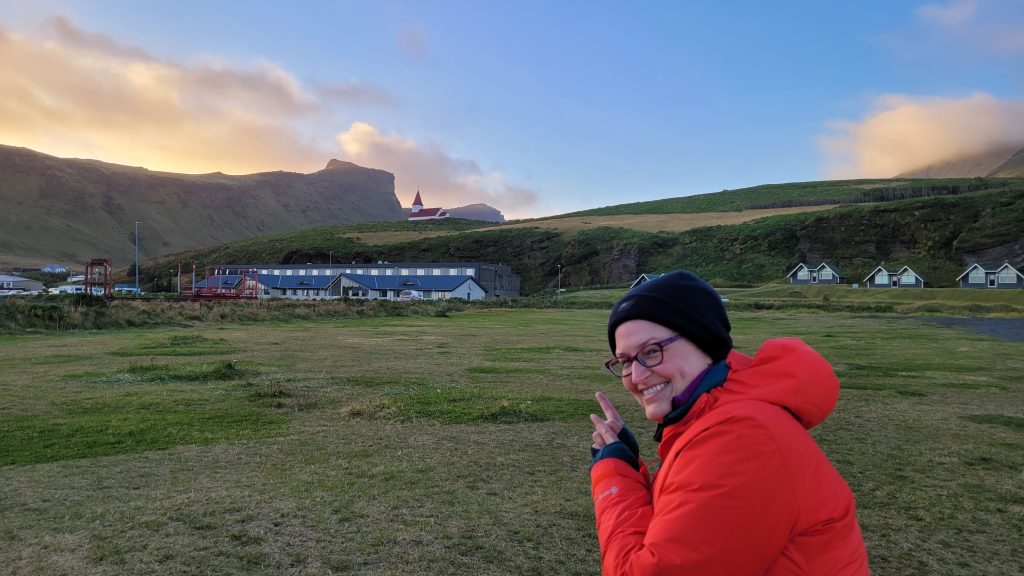
Black Crust Pizzeria
Once we got settled in our appropriate camping spot without electrical hookups, we discussed dinner. On the way to the campground, we noticed a restaurant across the road called Black Crust Pizzeria. We were curious so we walked about ten minutes to the restaurant. Inside we found a mix of tourists and locals. We ordered garlic cheese-stuffed breadsticks and langoustine pizza. I also got a Gull beer (ah, when in Iceland…it’s a simple Icelandic lager). The pizza crust and bread are infused with food-grade charcoal to give them their black color. We loved both dishes and absolutely stuffed ourselves!
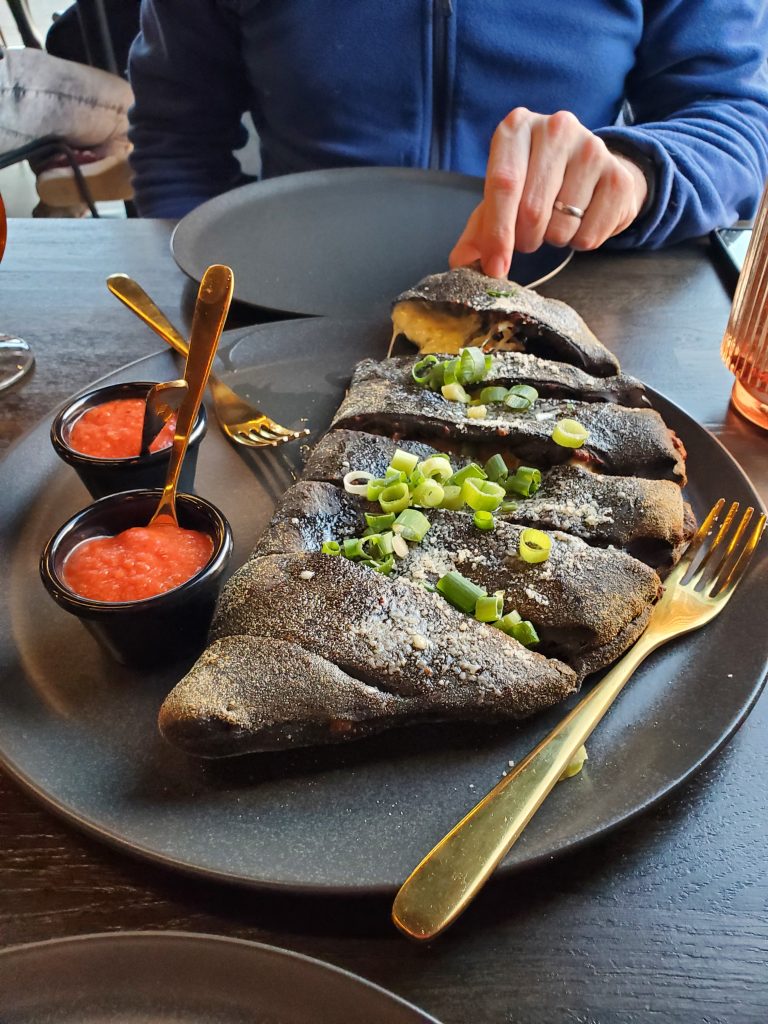
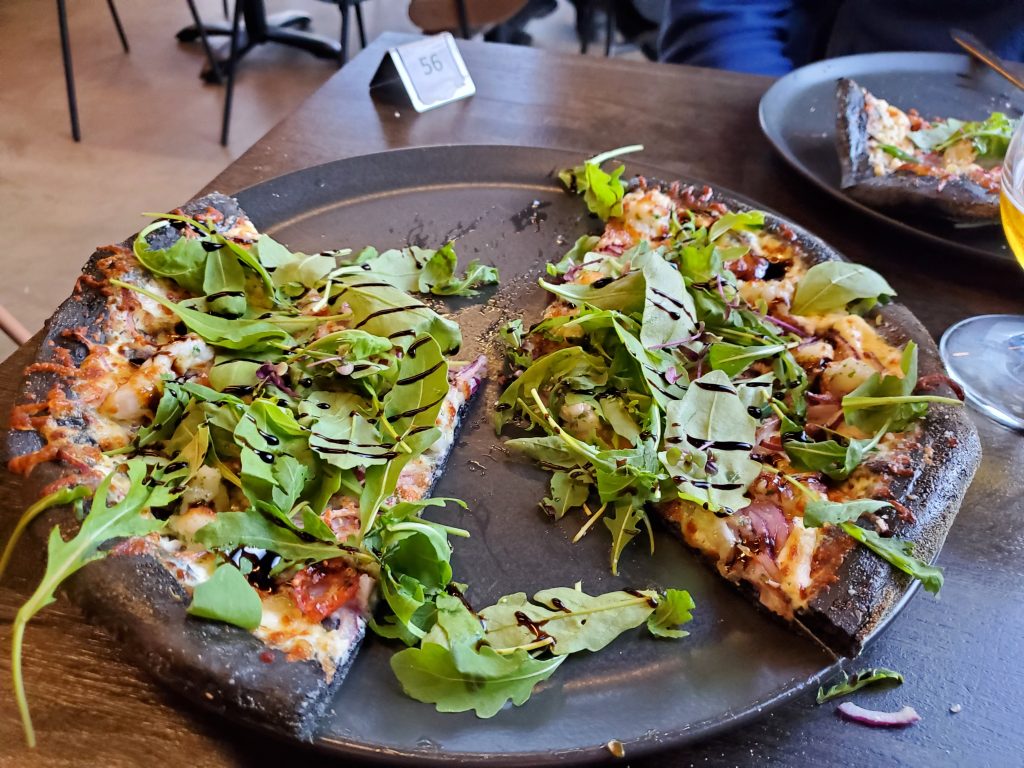
After we left the restaurant, we walked toward the beach and saw another angle of the sea trolls, Reynisdrangar. Then we caught a picture of Vík’s famous church above our campground.
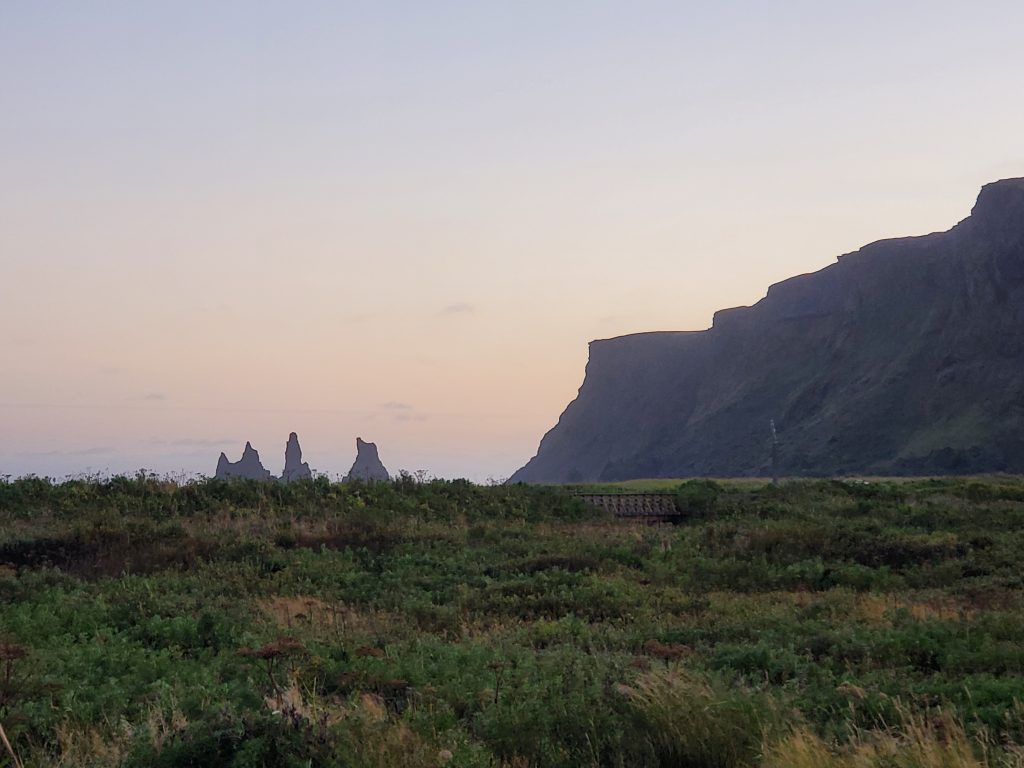
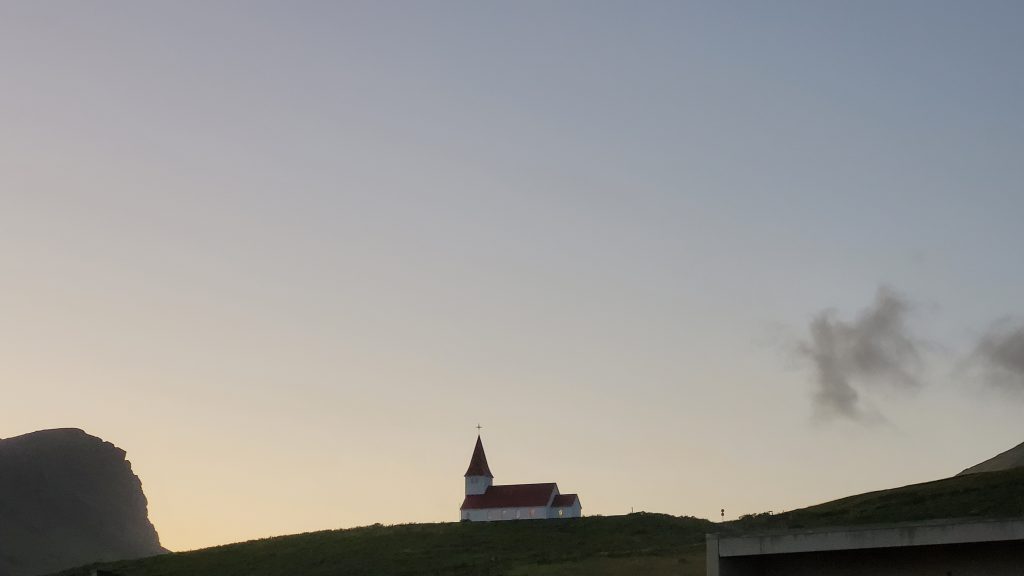
Back at the Campground
Back at the campground, we pored over our copy of Rick Steves Iceland and planned our next day. Rick Steves guides provide great in-depth information about travel locations, and Rick will tell you if something is worth doing or skipping. Plus, his guide for Iceland includes a fantastic map. We looked through the book each night as we thought about activities for the next day.
While trip planning, I read about glacier hiking and decided that we’d make the decision whether or not to book a tour on the fly. For months I had been tracking the Arctic Adventures website and noticed that tours typically booked up on or near the day of the tour. Given that we were in Iceland during its very short fall which is a shoulder season for travel, I figured we could decide as we approached the Vatnajökull Glacier, the largest glacier in western Europe. The weather forecast for the next day looked good, so we went ahead and booked the Glacier Wonders tour with Arctic Adventures.
